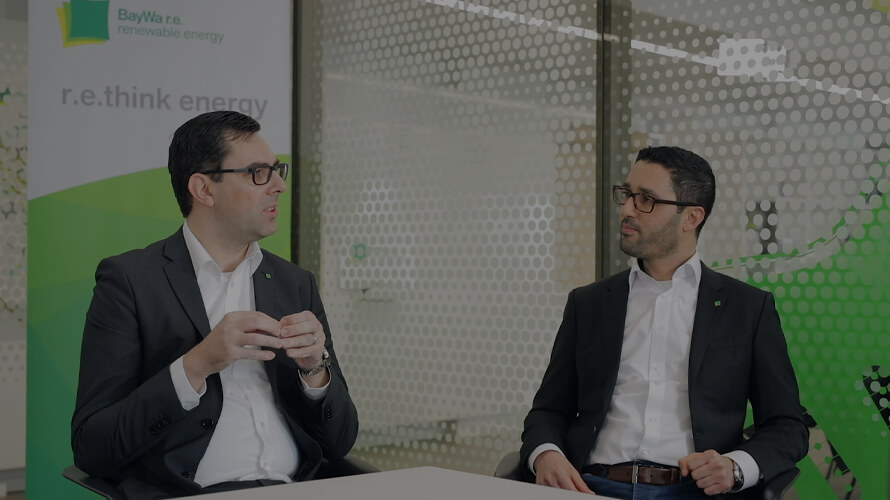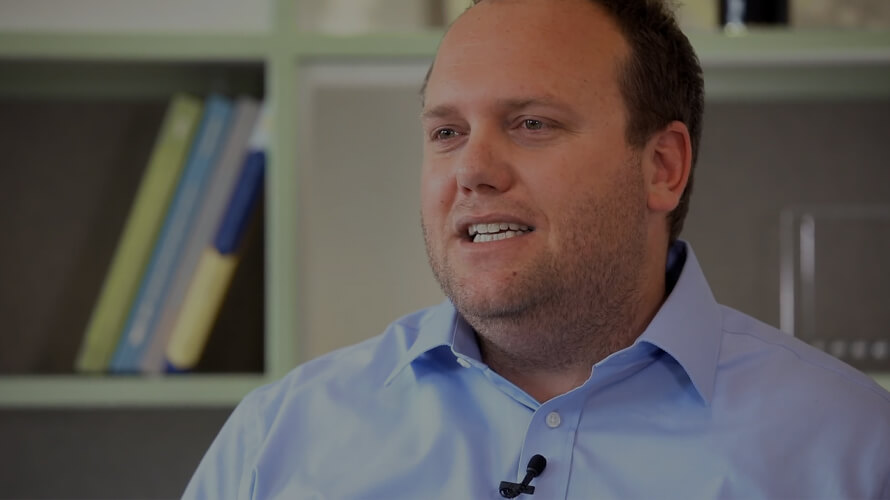Explore the ‘Decade That Matters’

Explore the Decade That Matters with BayWa r.e.
Our last chance to avert the climate crisis

Explore our blog
Read our latest content pieces
Explore our ‘What ifs’
Digitalisation is transforming the renewable energy sector. From asset management to Artificial Intelligence, and from blockchain to the Internet of Things. Collectively they are helping to unlock the full potential of renewable energy, increasing operational efficiency and deriving more customer focused outcomes.
Slide through to learn which technologies are relevant at each stage.
The most exciting part of AI is unlocking solutions that we can’t even imagine today. Letting the data teach itself and take us forward in new and exciting directions.

R.E.THInk Talk:
Dr. Virgil Cazacu, Head of Digital Transformation &
Mohamed Harrou, Team Coordinator, SCADA, BayWa r.e. AG
Would you like to know how digitalisation is closing the loop in the energy value chain and taking the renewable energy industry into a new era? Watch this film for the answers.

R.E.THInk Talk:
HAggai Hofland, Founder and CEO, raycatch
Learn more about Raycatch’s pioneering DeepSolar™ software, which utilises state-of-the-art Artificial Intelligence to analyse plant performance, predict possible incidents and provide predictive solutions.
Etienne Lecompte, CEO, Powerhub
The first, and it feels crazy to say this, is adopting technology in a coordinated fashion. Sure, most organisations have tools in house, but we are seeing wholesale reviews of these. So, we expect to see more businesses adopting a coordinated digital strategy. Secondly, too much data and too little information is becoming all too common. So I also see more toolsets like ours being used to cut through the clutter and focus on what matters.
One source of truth – when you are looking at information, it is the most recent version that the organisation has and will put together.
Increased effectiveness and efficiency – in many organisations there are a lot of manual processes that create little value and can easily be replaced by process and workflow automation.
Increased transparency – whether it is customer portals, supplier relations, landlords or landowners, giving access to information can greatly help your business.
Information at your fingertips – ultimately, digitalisation of asset management is about putting the right information in the right hands at the right time.
Not considering ‘the people’ – whether you want to change an invoicing process, automate reporting, or facilitate data access, it should all start with the users and business needs rather than technology.
Running before walking – it’s seductive to see the wealth of tools on offer by a software vendor; however, more often than not, to take full advantage of ‘advanced’ features, organisations need to start with the basics.
Not following through – ensuring the stickiness of any technological change requires constant buy-in from management and continued support from the organisation. So, never let up and continue pushing the implementation.
Companies like ours are constantly modernising their technological infrastructure to offer more flexibility and robustness to our clients. AI, and Machine Learning especially, is going to continue making great strides forward.
Also, a big challenge is reliability and quality of data. We are now seeing bigger and broader advances to solve that issue in terms of better quality of data and information. We will also see better integration across toolsets. No one can be the master of all functions, so we’ll continue to see more partnerships and marketplaces offering integrations between business tools, software packages and devices.
I think the renewable energy operating model as we know it will be gone. Businesses are asking, ‘How do I add value today to my assets?’ The more important question is, ‘How will I add value tomorrow?’ If your business model is in any way ‘manual’, the odds are you will be left behind.
At the rate technology evolves, I see ecosystems of products working together to self-perform, diagnose, and optimise projects and assets themselves then providing feedback to users. We will see increased sophistication of both the type of assets and the types of services that will be offered. Just optimising all the new infrastructure in an open and connected way will be the norm in 10 years. Let's start today!